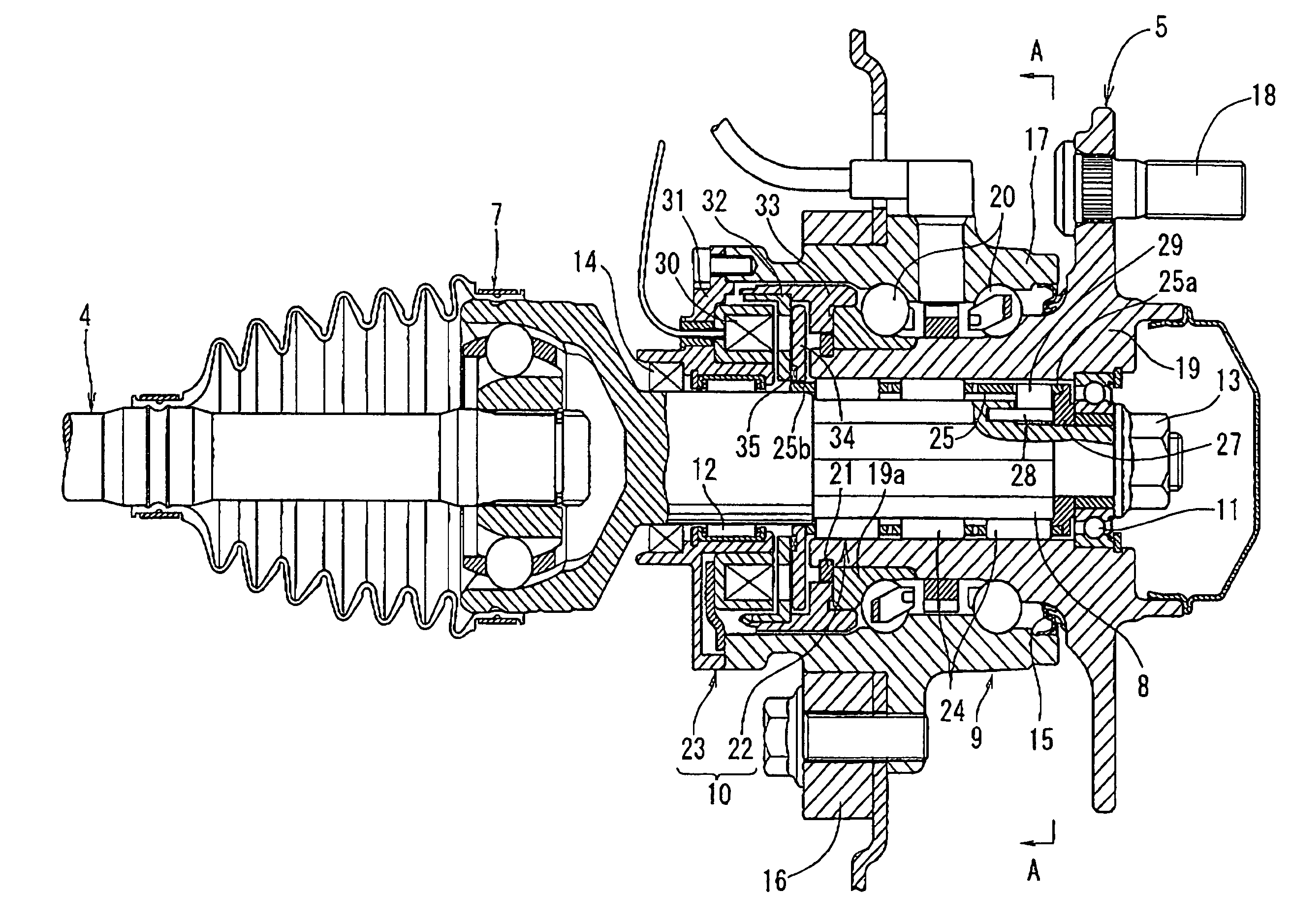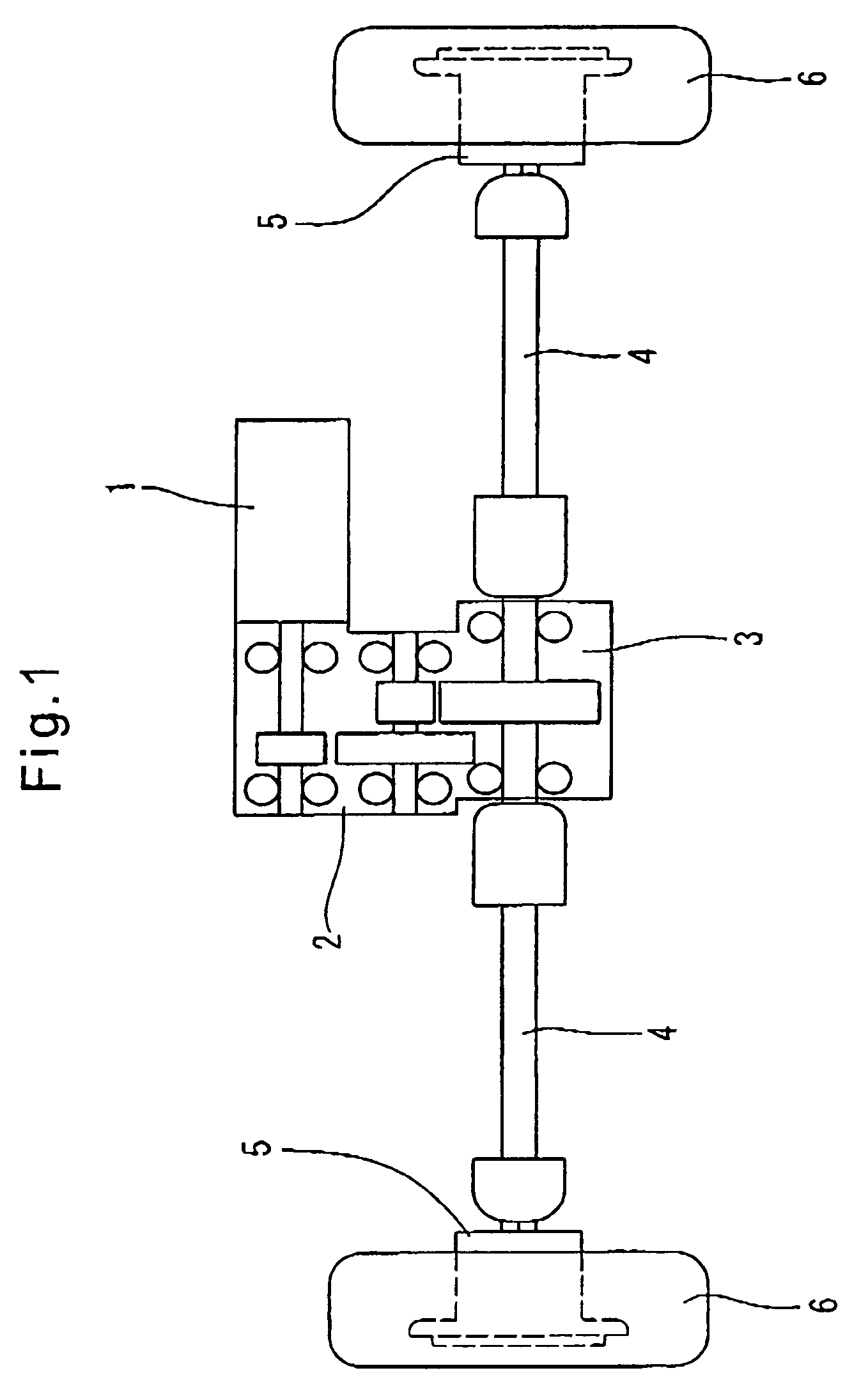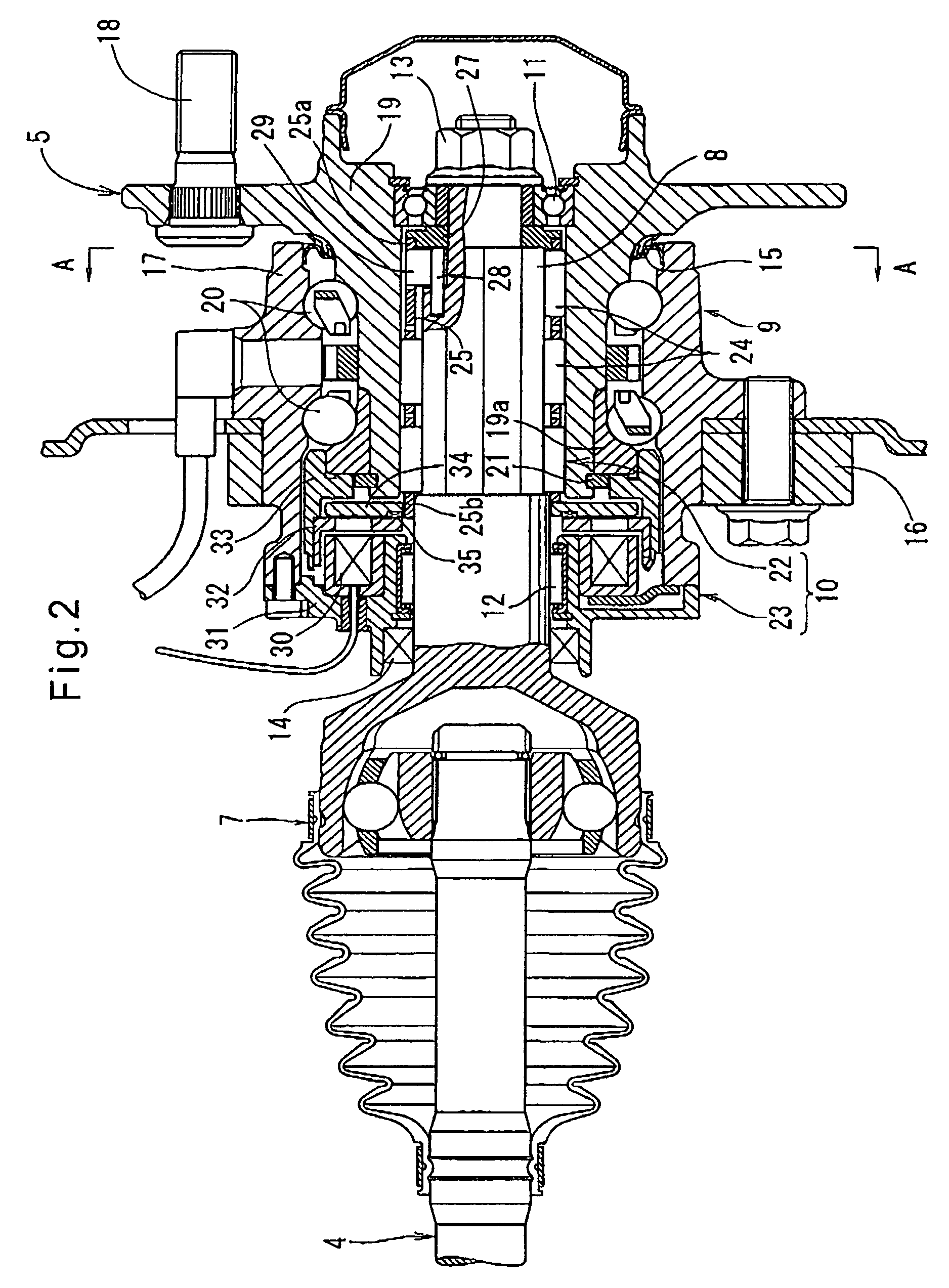Power transmission mechanism and electric drive system using the same
a transmission mechanism and electric drive technology, applied in the direction of interengaging clutches, road transportation, fluid couplings, etc., can solve the problems of affecting the safety of the motor, the collision between the driving and the driven members may not mesh with each other, and the locking of the motor and the driven members may fail to work properly, so as to minimize the drag torque, improve fuel economy, and protect the motor.
- Summary
- Abstract
- Description
- Claims
- Application Information
AI Technical Summary
Benefits of technology
Problems solved by technology
Method used
Image
Examples
Embodiment Construction
[0032]Now referring to FIGS. 1–7, the electric drive system embodying the present invention will be described below. This drive system is mounted on what is known as a hybrid car to drive either its front or rear wheels, and includes an electric motor 1 and a drive train. The driving torque produced by the electric motor 1 is transmitted to right and left wheels 6 through the drive train, which comprises a speed reducer 2, a power distribution mechanism 3, drive axles 4, and power transmission mechanisms in hub clutch units 5.
[0033]The electric motor 1 is a DC motor including a permanent magnet. Its output (rotation) is reduced in speed by the speed reducer 2 and delivered to the right and left drive axles 4 through the power distribution mechanism 3. The outputs of the respective drive axles 4 are delivered to the respective wheels 6 through the respective hub clutch units 5. The wheels 6 thus rotate at the same speed as long as the hub clutch units 5 are both engaged.
[0034]As show...
PUM
 Login to View More
Login to View More Abstract
Description
Claims
Application Information
 Login to View More
Login to View More - R&D
- Intellectual Property
- Life Sciences
- Materials
- Tech Scout
- Unparalleled Data Quality
- Higher Quality Content
- 60% Fewer Hallucinations
Browse by: Latest US Patents, China's latest patents, Technical Efficacy Thesaurus, Application Domain, Technology Topic, Popular Technical Reports.
© 2025 PatSnap. All rights reserved.Legal|Privacy policy|Modern Slavery Act Transparency Statement|Sitemap|About US| Contact US: help@patsnap.com



